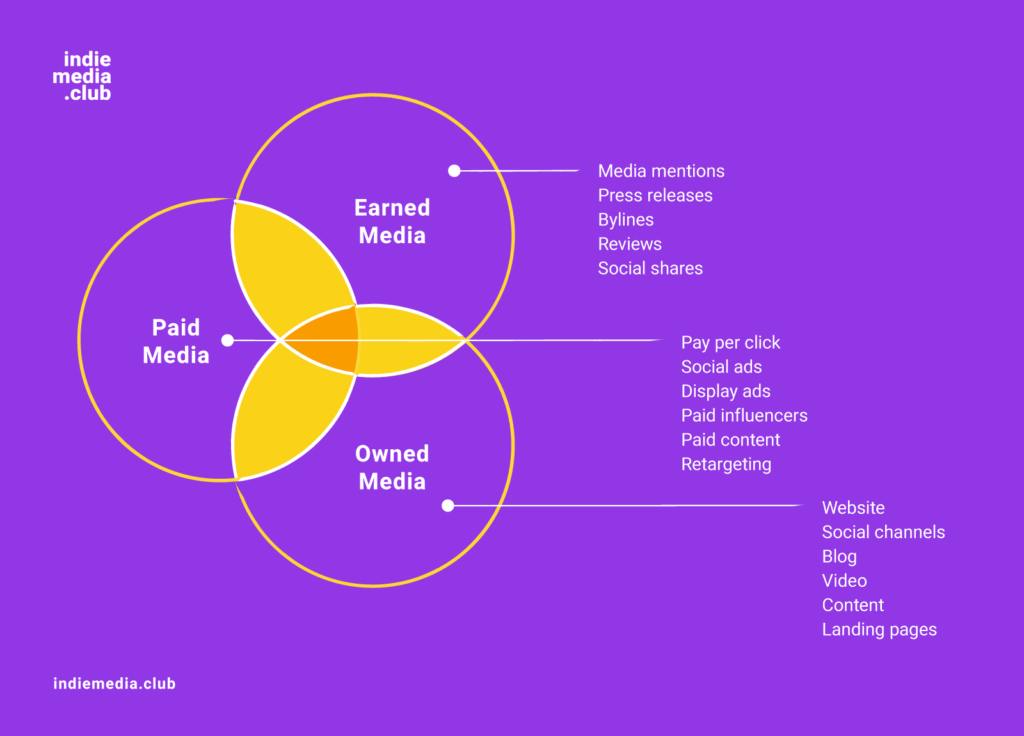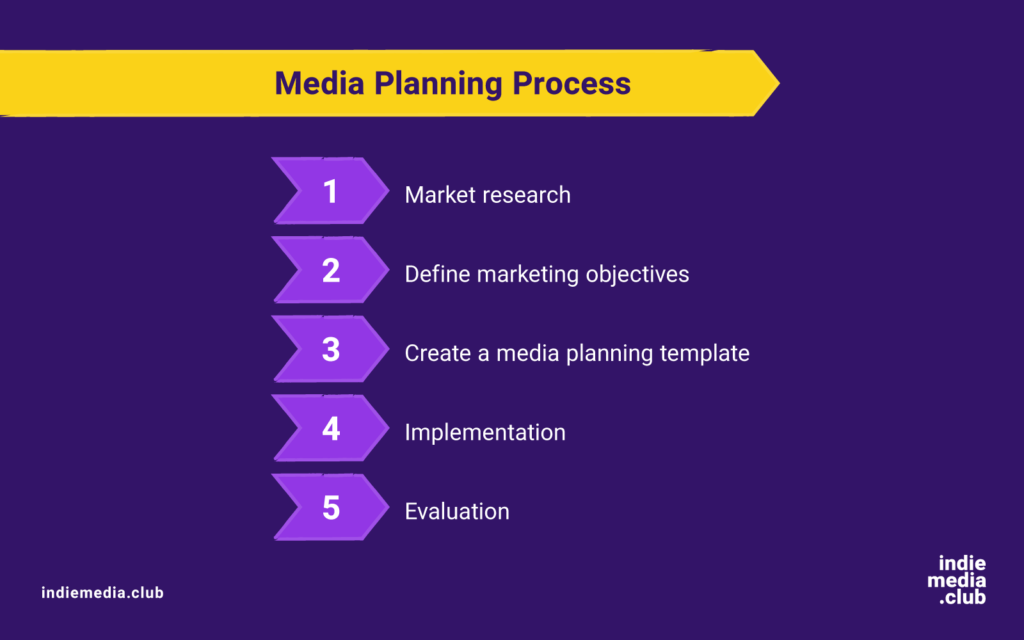Building brand awareness in the digital marketing world is critical for the success of any business. You are offering a solution to a problem for your target audience, but if they don’t know that you exist, they’ll never have the opportunity to solve their problems. This is why media planning is so crucial for digital brands and publishers.
For brands that primarily exist in digital spaces, you have to create a strong online media presence, or you risk running your business into the ground. But how do you move beyond social media platforms and referrals? Media planning creates an organized strategy for generating brand awareness through various marketing channels you might otherwise miss.
Before diving into the media planning process and some tips for getting started, we will define media planning, point out the differences between media buying and media planning, outline the benefits of media planning, and discuss the various types of media planning.
By the end of this article, you’ll be able to get a media planner in place to help your brand thrive.
What Is Media Planning?
In short, media planning is creating the entire marketing strategy for successful ad campaigns. Media planners, the individuals who develop media planning strategies, take into account demographics, KPIs, market research, pricing for a media budget, audience segmentation, buyer personas, etc. and synthesize everything into a streamlined strategy.
Media planning is the skeleton that media buying then puts flesh on. Without the right advertising strategy, media buyers are taking shots in the dark based on crude data and intuition.
Digital media planning requires attention to many details that might otherwise seem unimportant until you combine all of the data to start determining an effective media plan.
What Is The Difference Between Media Buying And Media Planning?
As mentioned before, media planning provides the framework for media buyers to make informed decisions about the type of ad spaces or ad campaigns they will run.
While both can be done independently, they truly are two parts of one whole process. Without media planning, media buying is like throwing darts at a board and hoping for the best. Media planning with no intention of media buying is just wasted time and resources.
Media buying
Media buying focuses on creating the appropriate media mix of ad campaigns and tracking the metrics to see how these ads perform. Media buyers consider the media strategy created by media planners but carefully select the media channels that might have the highest conversion rates or generate the most website traffic.
The focus of media buying is how the campaign performance ultimately affects the overall marketing plan for a brand. See our article on media buying for a full breakdown.
Media planning
Media planners take all of their know-how from marketing certifications, due diligence of assessing potential customers and markets, coordinating with the marketing team to find the best optimization opportunities, etc., to clearly define their target audience and build out the best media plan and media strategy possible.
Media planning focuses on synthesizing data for the most optimal marketing campaign possible for digital advertising and traditional media campaigns. The media planner finalizes their process by creating a clearly defined process and document for media buyers to follow through on.
Benefits of Media Planning
The media planning process has plenty of benefits outside of the obvious. While media planning means you will come out the other side with a well-formed ad campaign strategy, it also means you will achieve the following:
- Hyper-awareness of your target audience and their wants and needs.
- A complete assessment of your current media channels and the effectiveness of those marketing campaigns.
- Awareness of the real-time efforts of your marketing team and how those will affect new media strategies.
- Clearly defined marketing objectives that might otherwise go unnoticed due to the amount of consumer data you will be assessing.
- Better relationships with advertising agencies and ad formats where, previously, no relationship existed.
- A formalized process for the continuous assessment of marketing campaigns, projects with advertising agencies, and your overall marketing strategy.
While plenty of other marketing objectives can be achieved through the media planning process, these are some of the highlights that often get overlooked. While media planning can be long and arduous, it pays off in many departments outside your marketing team.
For all of this hard work to pay off, though, you must have a clear idea of the types of media planning involved and how to make them effectively work for your brand.
What Are the Types of Media Planning?

While media planning considers the overall media buying strategy, you should focus on specific facets of your media strategy and create a media plan for each branch. Generally, you can break it down into three types of media planning: owned, paid, and earned.
Each one will have its quirks that you have to pay careful attention to, and each one will generally have a level of difficulty and risk associated with it that might not be true for the others.
Owned media
Owned media typically refers to any sort of media that your brand or company has full rights to and can claim as being 100% owned. Examples include blogs, websites, email lists, etc.
If your company has rights to the information on those media channels, you can consider it owned media.
But how does owned media come into play for media planning? Since your brand owns that particular media channel, it is free for your marketing campaign. Leveraging your owned media effectively and distributing it across paid and earned media channels can be an effective way to stick to your media budget while creating a great media strategy.
For owned media in the media planning process, it can include doubling down on your content marketing efforts within those owned media channels, or it can mean using those owned channels to create opportunities for paid media or ad campaigns where traffic is already coming in.
Paid media
Paid media refers to anything you are paying for on media channels. Typically, for media planning purposes, this means paid ads. Whether you are working with an advertising agency, renting billboard space, or creating a LinkedIn ad, this all falls under paid media.
Paid media is an incredible way to leverage current revenue to create more revenue opportunities. Paid media can get you in front of people who aren’t already part of your audience.
Paid media typically filter towards owned media channels, like hitting a landing page where they can then make a purchase or sign up for a newsletter. Creating traffic to those owned media channels supports the overall marketing strategy of your brand.
Paid media can also be a great way to generate brand awareness. Sometimes paid media can be used entirely for PR marketing.
Earned media
Earned media can be a little more difficult to define or manage as part of your media planning process. Earned media typically includes promoting or advertising your brand through organic means.
Earned media includes, but is not limited to:
- Reviews/referrals
- Social shares
- News publications or other media coverage
- Guest posts
- Being mentioned by influencers
- Other social media mentions or shoutouts
During the media planning process, it is important to consider where stakeholders are finding attractive publicity and where they may want to see more coverage for the brand. For example, many stakeholders see having a presence on TikTok as a given, whereas others may find LinkedIn more critical.
Take careful note during the media planning process where opportunities arise for potential relationships to form concerning social media specifically. This is where most earned media channels originate for almost all brands and companies.
Earned media is about building trust between brands and consumers. According to a study by PWC, the gap between how much trust brands think they are earning vs. the level of trust consumers have in brands is only widening. Make sure you are thinking through earned media planning to adjust for that gap in your marketing objectives.
Tips For the Media Planning Process

The media planning process isn’t complicated, but it does have a linear progression that you must follow. Otherwise, you might risk ruining all of your hard work but jumping to the next phase before you are ready.
Generally, the media planning process looks as follows:
- Market research: You will need to define your target audience, buyer personas, etc., but this is the phase where you are also going to evaluate all of your types of media planning and assess what is most effective for your brand in the following steps.
- Define marketing objectives: Once you have completed the market research phase of the media planning process, you will define some marketing objectives. Consider KPIs, marketing campaign goals, and marketing channels to build an effective media plan.
- Create a media planning template: With the research and objectives clearly defined, it’s time to start building your media planning template. Consider these media planning templates as living documents to continually edit and adjust as you move through future media planning processes.
- Implementation: Put your media plan into effect, hand it off to those in charge of media buying, and begin collecting data as it rolls in.
- Evaluation: Assess data as media buyers begin to implement your media plan and synthesize data into opportunities for improvement in your media planning process in future iterations.
Most of a media planner’s time is spent in steps 1, 2, and 5: Creating, assessing, and improving for future projects. While there is plenty of time spent crunching data and trying to make sense of it all, there is a lot of beauty in seeing how all the threads of your marketing strategy can come together for your brand.
3 Essential Tips For Media Planning
Now, to help you improve and thrive in your media planning process, here are some of the best tips for media planners, whether you are just starting or are a seasoned media planner.
1. Don’t neglect offline media
While most ad campaigns are digital marketing efforts, there are plenty of opportunities for effective media planning that is entirely offline.
For example, some brands and companies have incredible success rates working with billboards, newspapers, and paper magazines. Traditional paid media opportunities are some of the most effective for brand awareness because we tend to train our brains to mostly ignore online ads (unless they are created effectively, of course).
While most media planners focus on digital media, if you take the time to assess offline media opportunities carefully, you will be ahead of the rest.
2. Work closely with other teams
Media planning naturally involves plenty of media content creation. Unfortunately, media planners don’t always ask their content marketing team how possible it is to create the type of media content they may be writing up in the media plan.
All the media planning in the world won’t be able to account for the fact that if your content marketing team can’t create what you expect, you have wasted everyone’s time.
While most media planners won’t necessarily be asking for anything too crazy in the media plan, they may ask for something that goes directly against their brand strategy. This can create conflict where there doesn’t need to be any if you consider other departments.
Media planning means considering the inner mechanisms of your brand’s hierarchy, brand strategy, marketing teams, and target audience.
3. Keep window shoppers in mind
Offline or online, people tend to “window shop” or idly look at things they don’t intend to buy but then make a purchase far more often than you might think. As you are working on your media planning, keep notes for developers, web designers, etc., that might be useful during the content creation process.
You are collecting a ton of data that might also be useful for various departments. You will naturally stumble across important data about what your target audience likes to see and engage with. Rather than hide all that data, try to incorporate that data in documents that might also be useful for other departments.
While you can’t be expected to collect everything into neat spreadsheets for everyone (in addition to everything else you are working on in media planning), you can jot down some quick notes for other teams to add to their spreadsheets that might be helpful.
Working together well with other departments or providing insights for your clients or teams can go a long way to streamlining the marketing strategy and generating better results for your own media planning process.
Media Planner or Not, Here You Come!
From buyer persona to social media strategy, those in media planning take all the available data for their brand or company and ultimately create the premiere media strategy tailored to their company. Part content creation, part marketing strategy, and all data scientists—media planners are the masters of their craft.
Now that you know what media planning is, its benefits, and types of media planning, and you have some of the hottest tips for media planners, you are all set to start creating your own media planning process and templates.
If you want to keep learning and growing about media planning, then make sure to subscribe to the Indie Media Club newsletter today!
More from Indie Media Club:
- What Is Media Buying And How Does It Work? (Steps & Essential Tips)
- How To Develop A Content Management Strategy
- How To Choose The Best Content Marketing Software In 4 Easy Steps
- 7 Types Of Social Media Advertising To Improve Your Online Presence
- The Ultimate Content Monetization Strategy Guide For Media Brands And Publishers
- A Complete Guide To The Best Content Software Types & Examples
- 23 Best Content Analytics Software To Improve Your Content Strategy & ROI [2024]
- 10 Best Content Planning Software For Your Website Or Blog In 2024
- 10 Best Content Calendar Software To Plan Your Website Content [2024]


